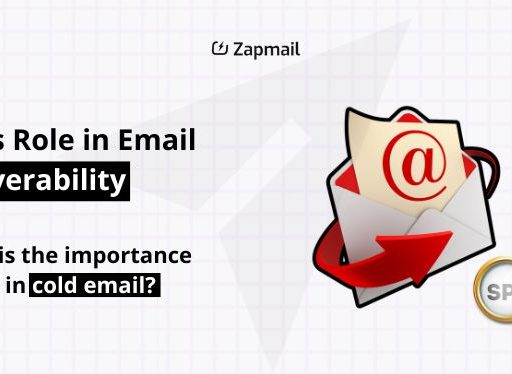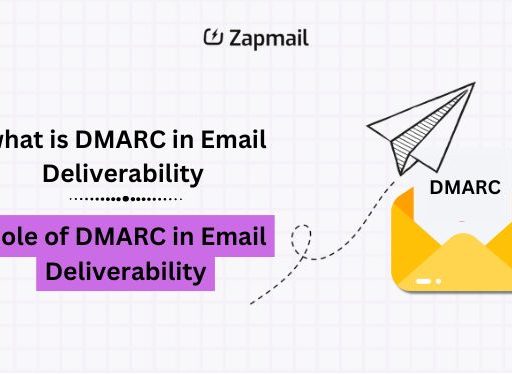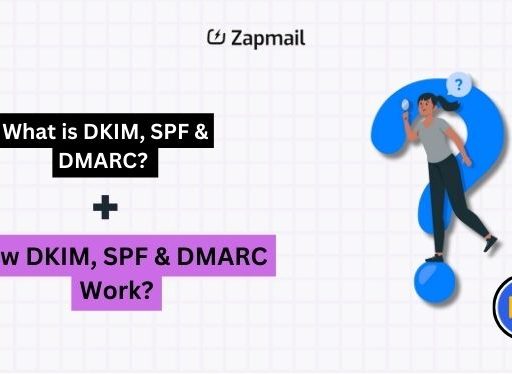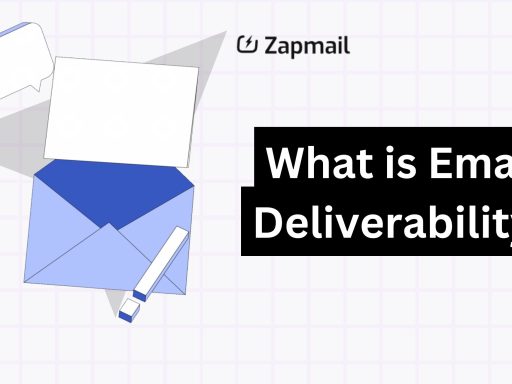The world of email is always changing, thanks to technology. Google Mailboxes are leading the way with new rules for sending emails. These rules are designed to keep unwanted emails out and make sure your messages get through.

As of 2024, senders must follow strict guidelines to keep emails safe and reliable. It’s crucial for businesses to understand these rules in order to stay competitive.
Google wants to make sure emails are secure and real. They require things like Transport Layer Security (TLS) and strict rules against fake ‘From:’ headers. Senders also need to use SPF, DKIM, and DMARC, especially if they send a lot of emails or use forwarding services.

Key Takeaways
- Google’s new requirements for email deliverability indicate an industry shift towards higher security and authenticity standards.
- Effective from 2024, email senders must embrace protocols such as TLS connections and SPF, DKIM, and DMARC for delivering emails to Google mailboxes.
- Maintaining a low spam rate below 0.3%, as reported in Google’s Postmaster Tools, is paramount for sender reputation and email deliverability.
- Failure to comply with Google’s guidelines could lead to increased spam labeling, impacting the ability to reach intended recipients’ inboxes.
- Engagement with bulk email recipients is key; use practices such as one-click unsubscribe and quick processing of these requests to maintain healthy email lists and deliverability rates.
- Google mailboxes play a pivotal role in protecting users from spam and unauthorized email, filtering out approximately 15 billion unwanted emails daily.
- To align with these standards, brands must adopt best practices and work with knowledgeable partners like the Braze Email Deliverability team for guidance.
Understanding Email Deliverability and Its Importance
Email deliverability is key to successful email outreach. It directly affects how well your email campaigns work. Knowing about it ensures your emails land in the inbox, improving your sender reputation. In today’s digital world, keeping a high email deliverability rate is vital for marketing success.
Email deliverability deals with whether your emails end up in the inbox or spam folder. It depends on domain reputation, subscriber engagement, and following best practices. A good sender reputation helps ISPs and email services like Gmail trust your emails. Also, listening to feedback from your campaigns can help avoid spam marks.
Here are some ways to boost email deliverability:
- Keep a good balance of engaged and unengaged subscribers to protect your domain reputation.
- Use strong authentication like SPF, DKIM, and DMARC to prove you’re a legitimate sender.
- Send emails at the same time every day to help servers recognize your sending patterns.
- Stay away from spam triggers like too many capital letters, excessive links, or unusual sending habits.
Good email deliverability is crucial for a successful email outreach program. By focusing on key factors, you can make your campaigns more successful and build better relationships with customers through consistent communication.
In summary, email deliverability is the key to getting your emails to the customer’s inbox. By focusing on sender reputation, audience engagement, and managing your email infrastructure well, you can greatly increase the chances of your emails being seen and interacted with. This way, you avoid losing them in the spam folder.
Essential Factors Influencing Email Deliverability
Email deliverability is key for cold email outreach experts and communicators. It depends on several important factors. These factors affect how spam filters and recipient servers treat your emails. Knowing these can help your emails reach the right inbox and engage your audience.
Importance of Maintaining a Low Spam Rate
Keeping a low spam rate is crucial for email campaigns. Aim for a spam rate under 0.1%. This helps avoid blacklists and keeps your sender reputation high, which is vital for deliverability.
Implications of Sender Reputation on Deliverability
Sender reputation is shaped by many things. These include sending volume, recipient engagement, and email list quality. A good reputation, with high engagement and few bounces or complaints, improves deliverability. This means your emails are more likely to land in the inbox.
Domain Alignment and Authentication
It’s important to align and authenticate your sending domain. Use SPF, DKIM, and DMARC policies to verify your domain’s integrity. A strong DMARC policy helps protect against email spoofing, boosting security and deliverability.
- SPF (Sender Policy Framework) authorizes your domain to send emails, ensuring that the sender’s IP address is permitted to send on behalf of the domain.
- DKIM (DomainKeys Identified Mail) adds a digital signature to every email, linking it back to your domain and confirming the integrity of the email content.
- DMARC (Domain-based Message Authentication, Reporting, and Conformance) builds on SPF and DKIM, allowing the sender to specify how he wants email receivers to handle emails that don’t align with the DMARC policy enacted.
Using these authentication standards shows your commitment to email security. It’s key for getting emails to the right inbox. By focusing on domain alignment and email authentication, businesses can improve their email deliverability.
Comprehensive Compliance with Gmail Sender Guidelines
For businesses and email outreach experts, knowing Gmail’s sender rules is key.
In February 2024, Gmail introduced new email sender guidelines. These rules have changed how businesses communicate with their audience via email.
The new rules include several important points:
- All emails to Gmail must pass basic checks like SPF or DKIM.
- Senders of over 5,000 emails daily must also use DMARC.
- Keeping spam complaints under 0.3% is crucial for trust.
- Standardizing email formats and using correct MIME types is important.
- Marketing emails must have a clear unsubscribe link.
This update is more than just following rules. It’s essential for better email deliverability improvements. Here’s how following these rules can help your email strategy:
- Reduced Spam Flags: Proper checks lower spam flags, helping your emails reach more inboxes.
- Increased Trust: Following these rules builds trust with your recipients, ensuring they know your emails are genuine.
- Better Engagement Rates: With emails in the right place, people are more likely to interact with your content.
Preparing for these changes is crucial. Businesses should check their email practices against Gmail’s rules early. Following these Gmail sender guidelines not only meets Gmail’s standards but also improves email communication everywhere.
As the digital world keeps changing, it’s important to stay up-to-date. This helps keep your email marketing strong and effective.
How Google Mailboxes Enhance Sender Reputation
Google mailboxes are key in boosting a business’s sender reputation. They use advanced security measures and domain authentication. This helps companies send emails more reliably and keeps them in good standing with email providers.
Domain Authentication Protocols: SPF, DKIM, and DMARC
Strong domain authentication is essential for trustworthy emails. Google Mail supports SPF and DKIM to ensure emails come from the right place. SPF checks if the sender’s mail servers are allowed to send emails.
DKIM adds a digital signature to emails to keep them safe. It makes sure emails are not changed during their journey. DMARC connects SPF and DKIM, adding an extra layer of security. It also helps track email activities, which is good for sender reputation.
Impact of TLS Enforcement on Email Security
Transport Layer Security (TLS) is crucial for email security in Google mailboxes. TLS creates a safe path for emails to travel, keeping them encrypted. This is important for keeping messages private and secure, which builds trust with users.
ARC: Boosting Deliverability of Forwarded Messages
Keeping forwarded emails safe and deliverable is a challenge. Google mailboxes use Authenticated Received Chain (ARC) to solve this. ARC keeps email authentication strong even after forwarding.
This is great for businesses that forward emails. It helps keep their sender reputation strong, even with complex email forwarding.
Google mailboxes are essential for improving sender reputation. They offer top-notch security and authentication. This helps businesses send emails reliably and stay compliant with email provider rules.
Email Infrastructure: Setup and Benefits with Google Mailboxes
Using Google Mailboxes for your email setup boosts deliverability and makes managing emails easier. A good DNS and PTR record setup is key for reliability.
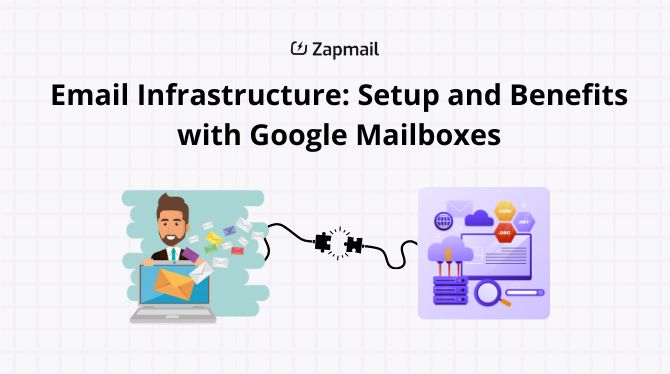
Let’s look at the setup and benefits:
- Email Service Provider Connection: Choosing Google as your email service provider gives you access to strong infrastructure. It handles both high and low email volumes well.
- DNS Record Configuration: The Domain Name System (DNS) is crucial. For your emails to be trusted, your sending IP needs correct DNS records. These should include SPF and PTR settings.
- PTR Record: This is a Point to Reverse DNS record. It’s important because it links your IP address to your hostname. Email providers use it to check if you’re the real sender, helping avoid spam marks.
Setting up Email Infrastructure with Google Mailboxes:
- Make sure your PTR record is correct and matches your domain name. This proves your legitimacy to email providers when you send emails.
- Keep your DNS records updated and support email authentication like SPF, DKIM, and DMARC. This improves your email delivery.
- Think about whether you need a shared or dedicated IP address. Dedicated IPs are more expensive but better for big organizations or high email volumes.
Benefits of Accurate Email Infrastructure:
Having accurate DNS and PTR records boosts your credibility with email providers. It also improves your email delivery rates. Your sender reputation is crucial, and Google Mailboxes make it easy to keep it high. This setup helps avoid spam and ensures your messages reach the right people.
In summary, following these steps helps businesses improve their email strategies. They use Google’s reliable service to keep their emails delivered well and their sender reputation high.
Monitoring Email Deliverability with Google Postmaster Tools
Improving email deliverability is key for any business using digital communication. Google Postmaster Tools offer a big advantage in managing email performance. They show important metrics like spam rates, IP reputation, and domain reputation, which affect how emails are received.
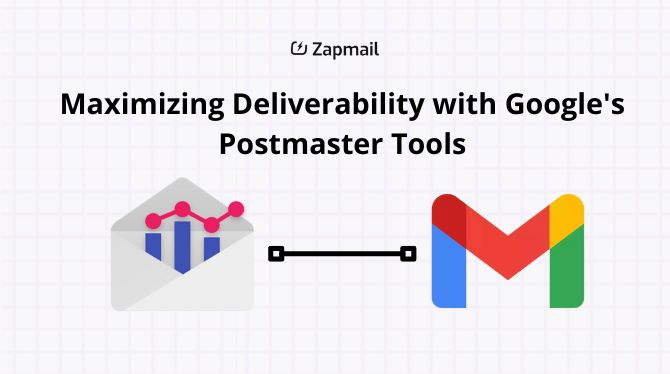
Understanding spam rates and their effect on deliverability is vital. For businesses sending over 5,000 emails a day, keeping spam rates under 0.3% is crucial. High spam rates can harm a sender’s reputation, causing emails to go to spam or be blocked.
Understanding Google’s Spam Rates and Their Impact
It’s important to watch and adjust spam rates with Google Postmaster Tools. These tools give insights into spam trends, delivery errors, and user reports. They help find issues early and improve email strategies. Also, keeping up with feedback reports helps understand what might trigger spam flags.
Analyzing IP and Domain Reputation for Informed Adjustments
IP reputation is crucial for email deliverability. Companies need to check their IPs often to avoid being blacklisted. Google Postmaster Tools provide detailed IP reports to help avoid delivery problems. Domain reputation is also key to keep the sending domain credible.
By tracking delivery errors and authentication successes, businesses can adjust their email protocols. Using SPF, DKIM, and DMARC can help emails land in the inbox more often.
Using Google Postmaster Tools well helps businesses stay on top of email deliverability. This ensures their messages reach the right people efficiently and reliably.
Strategies for Warm-up and Ramp-up with Google Mail
In the world of email marketing, managing your email volume and creating engaging content are key. These steps are linked to the IP warm-up process. If done right, it can boost your email campaign’s success.
Importance of a Gradual Increase in Email Volume
Starting an email campaign isn’t about sending lots of emails at once. A slow and controlled increase in email volume is essential. Studies show that starting with 40 emails per address and gradually increasing helps avoid spam flags.
Over two weeks, this approach helps build a good reputation with email service providers (ESPs). It makes the IP warm-up process smoother.
Building Email Relationships through Engaging Content
Creating engaging email content is vital for successful email delivery. Using manual A/B testing can increase reply rates by 30%. This shows how important it is to optimize your content.
Also, sending targeted campaigns can lead to a 101% increase in clicks. This highlights the value of personalized content in forming strong email connections.
It’s also important to gradually build up your email campaign over time. Following Google’s guidelines after their 2023 ban on automated warming services is crucial. Using manual methods like whitelisting and encouraging subscriptions helps get your emails into primary inboxes. This increases visibility and engagement.
By combining careful email volume management, quality content, and a systematic IP warm-up, you can create a successful email campaign. This campaign will not only reach but also connect with your audience.
Google Mailboxes in Email Deliverability
Improving email deliverability depends on secure emailing, Gmail filtering algorithms, and email deliverability strategies. Google’s advanced Gmail system makes email campaigns more effective. It does this through detailed filtering and management.
Gmail uses smart algorithms to filter emails. This ensures only real and important emails get to users. This keeps email boxes clean and makes users more likely to interact with emails.
Google mailboxes play a big role in secure emailing. Here’s how:
- SPF, DKIM, and DMARC check if emails are real, helping avoid spam.
- Following Gmail’s rules is key. Emails must be real, formatted right, and have few spam complaints.
- Google Workspace offers special email routing. This helps organize emails better, making professional communication easier.
Using Gmail filtering algorithms makes emails safer and more reliable. Sticking to Gmail’s strict rules helps businesses improve their email success.
Gmail is getting even stricter, focusing on email authenticity and easy unsubscribe options. Businesses need to update their email plans early. This means making their strategies fit Gmail’s new standards better.
By following Gmail’s new rules and using secure emailing, businesses can do better with their email marketing. They’ll see better delivery rates and more engagement. Using Gmail’s advanced features will make email communication more effective and reliable.
Monitoring and Analyzing Email Metrics with Google Tools
Effective email campaign optimization relies on strong monitoring and analysis. Google tools, like Google Analytics and Gmail insights, offer crucial data. This data helps users improve Gmail deliverability and email efficiency.
Best Practices for Subscription Management in Email Marketing
Managing subscriptions well is key to a healthy email list. It boosts both list management and user experience. The aim is to follow best practices and make content more relevant. This improves deliverability and keeps subscribers happy.
Simplifying the Unsubscribe Process
It’s important to make unsubscribing easy. A hard-to-find or complicated unsubscribe link can upset subscribers. This might lead to more spam complaints, hurting your domain’s reputation.
A simple, one-click unsubscribe link at the email’s bottom is best. It lets subscribers opt-out easily. This follows best practices and lowers the chance of being labeled as spam.
Enhancing User Experience with Relevant Content
Matching content with what users want is crucial. Segmenting your list based on user behavior makes emails more personal. This keeps subscribers engaged and happy.
Content that matches user interests is seen as less spammy. This helps keep your sender reputation strong. It also improves how often your emails get delivered.
Using tools like Email List Verify or NeverBounce can help. They keep your list clean by removing bad addresses. This makes your emails more likely to reach their destination.
By following these tips, you make your subscribers’ experience better. This leads to higher deliverability rates and stronger connections with your audience. Trust and loyalty grow over time.
Conclusion
The digital world is changing fast, making strong email marketing more important than ever. Google Mailboxes play a big role in email outreach success. They help by following rules and sending messages in a smart way.
Google’s rules help keep emails out of spam folders. This is key for getting messages to the right people. It’s all about keeping your reputation and getting more people to open your emails.
Studies show that following best practices boosts email delivery. This includes cleaning your list and using special security checks. It also means making your emails interesting and valuable.
Interestingly, how well you follow Gmail’s rules can affect if people see your emails. Research shows that many emails don’t make it to their destinations. But, those that follow Gmail’s rules are more likely to be seen and opened.
By following these steps, you can stand out in the email marketing world. You’ll build strong relationships with your subscribers and make your campaigns thrive. With the right approach, your email marketing can be a success in the fast-changing digital world.
FAQ
Google Mailboxes, especially Gmail, use advanced filtering and security checks. They require senders to follow standards like SPF and DKIM. This helps improve a sender’s reputation and boosts email deliverability rates.
Tools like Google’s Postmaster also help senders optimize their email campaigns. This leads to better results and more successful email outreach.
Email deliverability is key because it decides if an email reaches the inbox or spam folder. When emails are delivered well, they are more likely to be seen and acted upon. This leads to successful campaigns and better communication.
Keeping a low spam rate is crucial for your sender reputation. A low rate shows that your emails are valued by recipients. This improves your chances of getting emails delivered to the inbox.
Sender reputation is a score from email service providers based on your sending history. It considers spam complaints, email volume, and engagement rates. A good reputation means your emails are more likely to reach the inbox.
Domain alignment and email authentication prove that emails are from the stated sender. This prevents spoofing and phishing. Using SPF, DKIM, and DMARC records shows your credibility and helps bypass spam filters.
To comply fully, follow Gmail’s requirements like using TLS connections and formatting standards. Also, maintain low spam rates and use SPF, DKIM, and DMARC for authentication. This is especially important for high-volume senders.
These protocols confirm the sender’s identity, reducing the risk of fraud. They establish trust with ISPs, helping maintain high deliverability rates.
TLS enforcement ensures emails are encrypted, protecting against tampering. Google values this security, boosting your credibility and deliverability.
ARC preserves email authentication across forwarding hops. This keeps emails authentic, even after forwarding, reducing spam chances and improving deliverability.
Proper setup ensures technical elements like DNS are configured correctly. This aids in verification and reduces deliverability issues. Following Google’s technical guidelines builds trust and enhances deliverability.
Google’s Postmaster Tools provide insights into your email performance. They show spam rates, IP reputation, and more. By using these insights, you can improve your email strategies and boost deliverability.
Gradually increasing email volume helps build a positive reputation with Gmail. It shows responsible scaling and high engagement, aiding in better deliverability.
Engaging content is more likely to be interacted with, showing Gmail that you’re relevant. This interaction can lead to better inbox placement, lower unsubscribe rates, and improved reputation, supporting deliverability.
Secure emailing practices like encryption and authentication establish credibility and trust. Following Gmail’s high-security standards ensures emails are not flagged as suspicious, enhancing deliverability.
Effective subscription management includes a clean mailing list and relevant content. Make it easy for users to unsubscribe and provide targeted content to decrease spam reports. This improves user experience and sender reputation, ensuring emails reach the inbox.
